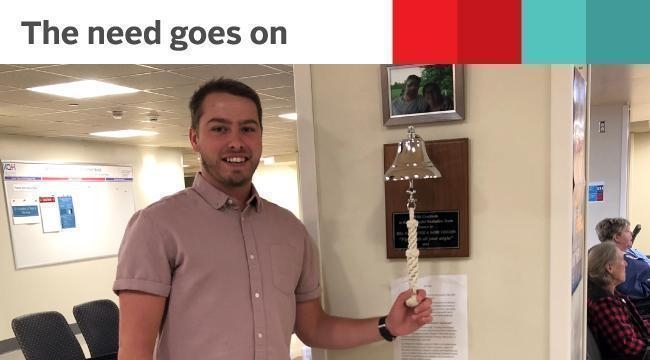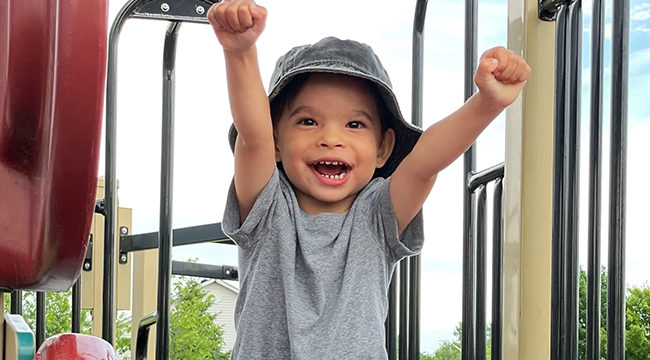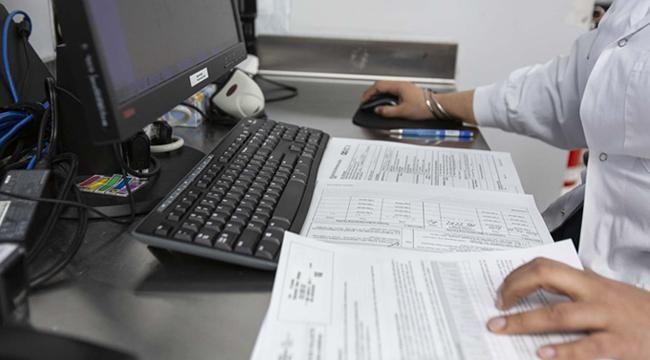Fostering an atmosphere of acceptance
This Pride Month, analyst Aiden Beattie reflects on a decade of changes at Canadian Blood Services
Over the past decade, Aiden Beattie has seen Canadian Blood Services undergo many changes. Among them has been a noticeable shift to further cultivate a safe, healthy and respectful workplace where everyone feels included and supported.
“For years, when some of my coworkers would ask me what I got up to on the weekend, I would often omit things that I felt might out me as a gay man,” says the IT strategy and execution analyst. “After I started being more authentic and open and honest about who I am, nobody really cared, and they were warm and supportive.”
Diversity and inclusion play a vital role in ensuring health equity and equality for Canadians, regardless of their gender identity or expression, sexual orientation, spirituality, ethnicity, age, visible or invisible disability, citizenship, socio-economic status or any other aspect that makes them unique.
As a founding member of the LGBTQ+ employee resource group, Aiden has been helping to put our diversity, equity and inclusion strategy into action within the organization and across our stakeholder community.
“For many LGBTQ+ individuals, oftentimes you have to go through that deliberate step of coming out. If you’re a visible minority, that’s not the case,” says Aiden. “I’m in a privileged position for many reasons. When you are somebody who feels like you’re in a position of relative security, it’s important to create an atmosphere where everyone is accepted and encouraged and celebrated.”
Supporting and empowering LGBTQ+ and other under-represented groups is central to Canadian Blood Services’ commitment to diversity, equity and inclusion. Employee resource groups can be a powerful tool to promote belonging, dignity and justice, by bringing employees together to share their experiences and perspectives with each other and with our organization’s leaders.
“I underestimated the potential of having access to an employee resource group. I was skeptical that the other members and I would have a lot in common because I’ve always thought of my sexual orientation as one of the least interesting things about me,” says Aiden. “I was surprised to find that talking to other people who share that aspect was a really powerful experience and also therapeutic in a way.”
READ MORE: ‘I’m not by myself here’: manager Amy Gow reflects on resources for LGBTQ+ employees
In addition to the employee resource group for LGBTQ+ employees, Canadian Blood Services has also created groups for employees with visible and invisible disabilities; employees who are Black, Indigenous, and People of Colour; and women in leadership roles.
As Canada’s Lifeline, we are taking steps to cultivate a donor base and workforce that more fully and equitably reflect Canada’s diverse population, through actions like the following:
- Creating a culture shift within our environments and building more awareness internally through refreshed training tools that focus on respect in the workplace and trans and LGBTQ+ inclusion.
- Making changes to our software to expand donor registration categories and to add a gender identity field, irrespective of sex assigned at birth.
- Implementing optional and anonymous self-identifying questions for job candidates to help us identify where we can be more inclusive in our hiring practices and ensure that all applicants have equitable opportunities.
- Supporting 19 research projects that are investigating donor eligibility criteria and screening processes to accelerate progress toward gender-neutral, behaviour-based screening for all donors.
“Though there is still a lot of work for us to do, we need to make sure that we’re able to acknowledge and celebrate the progress we’ve made,” says Aiden. “I’m as guilty as anybody of not looking in the rearview mirror. But if you’re only looking at what needs to be done and not the progress along the way, then you’re missing the big picture.”
Employee group provides support for conversations around eligibility
Part of that picture has been the ongoing evolution of blood donor eligibility criteria for gay, bisexual, and other men who have sex with men, and trans, Two-Spirit, and gender-diverse individuals.
Before authorizing changes to donor eligibility criteria, Health Canada requires evidence that the changes are safe for those who rely on blood products.
In eight years, the policy for donation by gay, bisexual, and other men who have sex with men, and some trans, Two-Spirit, and gender-diverse individuals, has moved from permanent deferral to a three-month waiting period since their most recent sexual contact with a man.
On Friday, June 18, CEO Dr. Graham Sher announced the organization’s intent to make a submission recommending this change to Health Canada, our regulator, by the end of 2021. Our goal is to remove the current waiting period for men who have sex with men and use sexual behaviour-based screening for all donors instead.
The employee resource group has been a supportive presence for navigating interactions with members of LGBTQ+ communities who are highly critical of the incremental pace of change.
“We’ve all struggled with how we talk about our deferral policy,” Aiden says. “You can’t explain all the reasons why we do what we do through small talk. But I approach those conversations with empathy because that anger is often about accumulated experiences and the feeling that they’re facing one more slammed door.”
For Aiden’s part, he feels the organization has covered a lot of ground in a relatively short amount of time as it continues the work of modifying practices and policies.
“This is difficult for people to see from the outside,” he says. “But when you’re inside the organization, you see that everyone wants fairness and equity and inclusion. You see the continuity in the progress, the desire to do the right things and the complexity of what we do.”
June is Pride Month in Canada and many other countries around the world, and Canadian Blood Services is recognizing the contributions of LGBTQ+ groups and individuals to Canada’s Lifeline.



